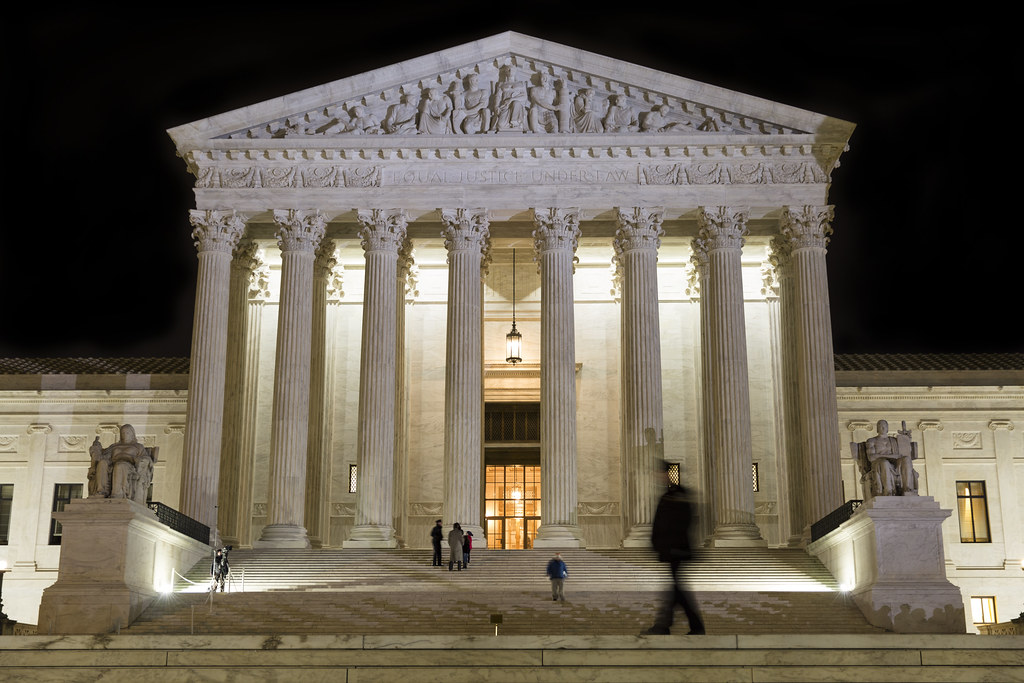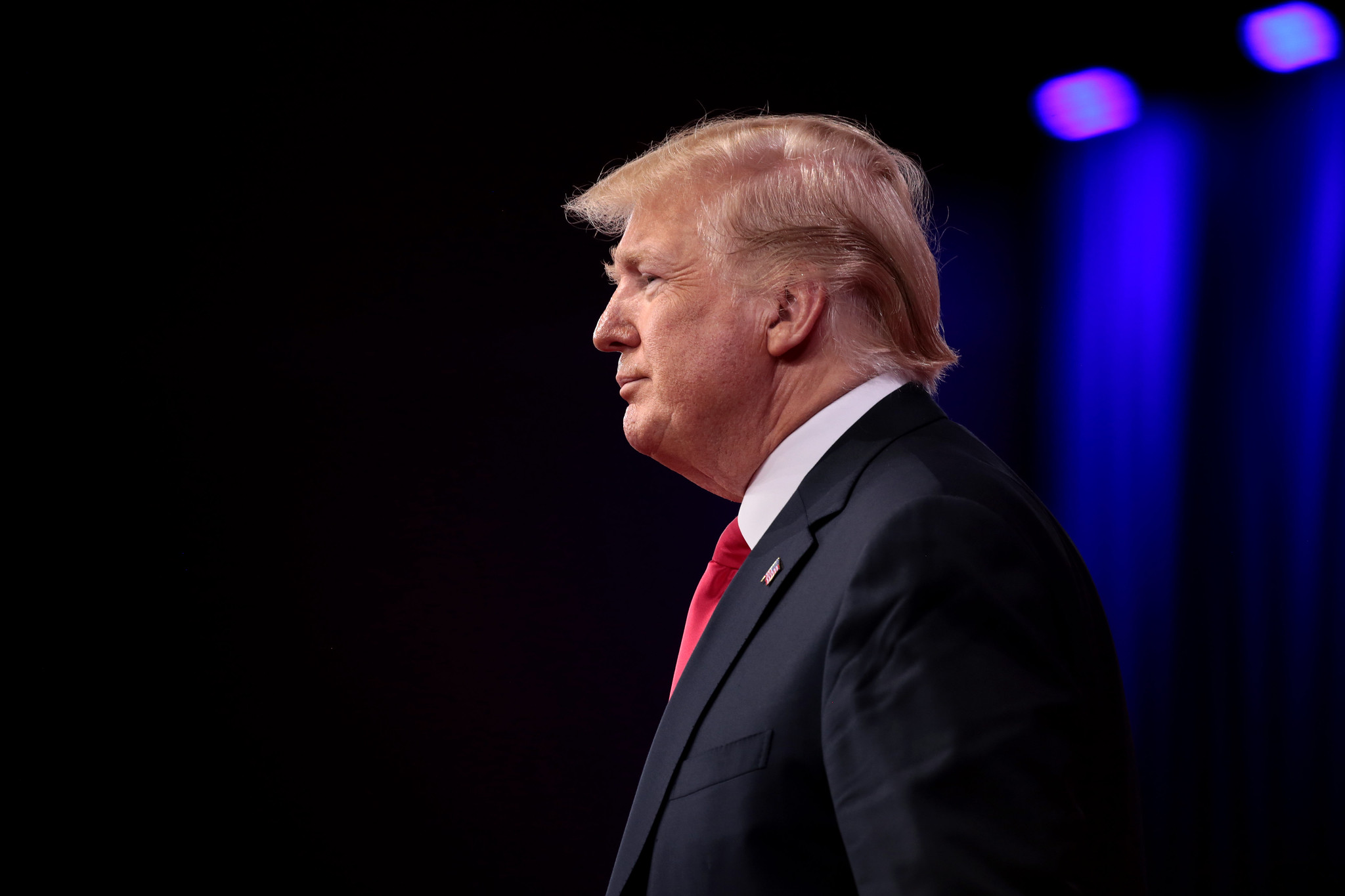Impeachment as an Alternative to Judicial Review
In recent weeks, House Democrats have intensified their investigation into President Trump’s contacts with Ukraine, subpoenaing documents from the executive branch and calling administration officials to testify.

Published by The Lawfare Institute
in Cooperation With

In recent weeks, House Democrats have intensified their investigation into President Trump’s contacts with Ukraine, subpoenaing documents from the executive branch and calling administration officials to testify. While fighting the House’s impeachment inquiry, Trump is also handling a litany of lawsuits against him and his administration. Last week, the Second Circuit heard oral arguments in Trump v. Vance—the case concerning whether President Trump can claim presidential immunity to shield his tax returns from New York state prosecutors. During oral arguments, Trump’s lawyer, William Consovoy, asserted that a sitting president is constrained only by impeachment and thus cannot be the subject of any criminal investigation while in office. In both the complaint filed in the district court and the Department of Justice’s amicus brief filed on appeal, the President’s legal team argued that rejecting presidential immunity in this case would allow a state to circumvent the Constitution’s impeachment process. These claims raise the question of how we should understand impeachment and judicial review to operate alongside one another as constraints on the president.
Youngstown Sheet & Tube Co. v. Sawyer—the 1951 Supreme Court decision that rejected President Truman’s attempt to nationalize the steel industry during the Korean War—is best known for establishing the modern framework for judicial review of presidential action. As the case was winding its way through the lower courts, Truman’s lawyer, Holmes Baldridge, argued for limited judicial oversight and expansive presidential power (ultimately unsuccessfully). During the hearing in the district court in Washington, D.C., the assistant attorney general engaged in a back-and-forth with the judge that is reminiscent of Mr. Consovoy’s arguments from last week:
Mr. Baldridge: [The President] has the power to take such action as is necessary to meet the emergency.
Judge Pine: If the emergency is great, [the President’s power] is unlimited, is it?
Mr. Baldridge: I suppose if you carry it to its logical conclusion, that is true. But I do want to point out that there are two limitations on the Executive power. One is the ballot box and the other is impeachment.
Judge Pine: I have never heard that expressed in any authoritative case before.
Judge David Pine blocked Truman’s attempt to seize the steel mills, and the district court decision was subsequently affirmed by the Supreme Court. Even though Baldridge’s argument did not carry the day in Youngstown, the Supreme Court has claimed that the availability of impeachment can be, in itself, a sufficient check on presidential power.
Indeed, according to the Supreme Court, the availability of impeachment can justify the absence of a judicial check on presidential action. In Nixon v. Fitzgerald, the Supreme Court explicitly pointed to impeachment as an alternative constraint on the president. The case addressed the scope of the president’s immunity to civil suit based on actions taken in his official capacity. Ernest Fitzgerald, a former Air Force employee, sought damages from President Nixon for allegedly firing him in retaliation for testifying to Congress on wasteful military spending. The Supreme Court ultimately rejected Fitzgerald’s claim, granting the president absolute immunity from all civil suits against him in his official capacity. But the court assured the public that, even with absolute immunity, the president would not be above the law, for “[t]here remains the constitutional remedy of impeachment.” Justice Lewis Powell’s majority opinion insisted that, even though courts will not step in to check presidential misconduct, “[t]he remedy of impeachment demonstrates that the President remains accountable under law for his misdeeds in office.” The court was well positioned to forward this claim in Fitzgerald: President Nixon had already been impeached and resigned, albeit for entirely unrelated acts.
Faith in the ability of impeachment to hold the president accountable has appeared in other Supreme Court opinions, though the court has never fully explained the reasoning behind this. As early as 1838, the Supreme Court gestured toward impeachment as an alternative check on presidential power. In Kendall v. U.S. ex rel. Stokes, the court declared that, when the president’s actions were based in the Constitution, they were beyond the reach of the courts but could still be checked by Congress through impeachment. Nearly 100 years later, in Ex Parte Grossman, the Supreme Court refused to limit the president’s pardon power to guard against abuse in exceptional cases; in those cases, the court maintained, impeachment was the proper solution. And in United States v. Stuart, seven years after Fitzgerald, Justice Antonin Scalia concurred in the judgment, arguing that the court should not mediate treaty disputes between the president and the Senate because the Senate could enforce its own understanding of a treaty through impeachment.
Though the court has repeatedly endorsed impeachment as an alternative check on presidential power, this theory is not without its critics. Among the most prominent are Laurence Tribe and Joshua Matz. In their 2018 book, To End a Presidency: The Power of Impeachment, Tribe and Matz argue,
Impeachment is not meant to function as an all-purpose tool for enforcing the Constitution. Accepting that position would create perverse effects .... When the president violates individual rights, there’s an overwhelming presumption in favor of judicial review—not impeachment—as the appropriate response.
Tribe and Matz, then, believe that the court should not point to impeachment as a sufficient check on presidential power to make up for the absence of judicial review.
Perhaps it was easiest for the court to emphasize impeachment in Fitzgerald because Nixon had already been impeached. Indeed, in its opinion, the court even cites to Nixon’s impeachment proceedings. Today, however, the impeachment inquiry has generated debates about what can be done to ensure that the current president is not above the law. These Supreme Court decisions are important for understanding how judicial and political checks can and should work in tandem. And while the Youngstown framework still applies to judicial review of presidential action, it remains an open question of when courts will review the president’s acts at all and when instead they will point to impeachment. With Trump administration officials asking courts whether they must comply with Congressional subpoenas, and with Trump v. Vance in all likelihood bound for the Supreme Court, we might soon know more about what role courts see themselves playing at the intersection of impeachment and judicial review.




